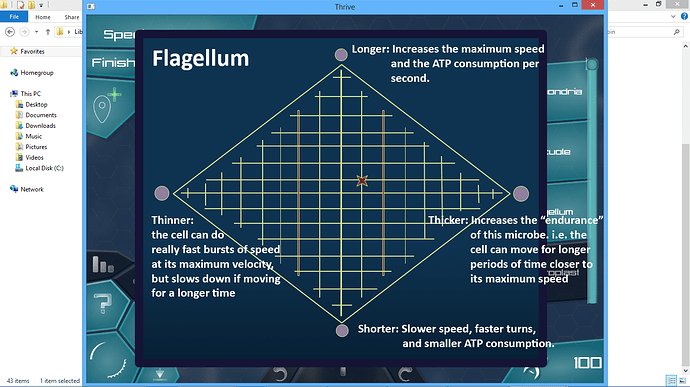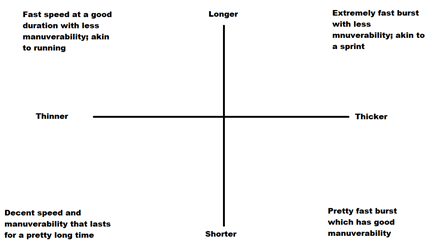Similar to the Cool Cell Behaviors Thread, this topic is meant to be a discussion regarding organelle upgrades. If you have ideas regarding how different organelle upgrades could work, don’t be afraid to post.
At the same time, if you heard of a cool microbial feature in real life that would be interesting to be implemented in Thrive as an upgrade but are not really sure as to how said feature would be implemented, still bring it up; we can help you figure it out.
Here are a couple of examples.
@The_Void suggested filter feeding, which he envisioned would be represented through a cilia upgrade. You would simply press a button which would basically create a vortex around you that sucks potential food items towards you, at the cost of burning ATP.
Caulobacter
Some cells are able to use glucose to generate a sticky substance akin to glue which slows down cells around them. I think this could be implemented through an upgrade to oxy-toxy, which basically makes the effect of a toxin projectile slow you down instead of deal major damage. It would be very cool to see once toxins are treated as compound clouds.
https://www.nature.com/news/2006/060410/full/news060410-1.html
Geo-electric
Some cells are able to use natural compounds such as Iron to generate enough electricity to provide them energy. I believe this could be implemented in Thrive through an upgrade to the mitochondria/metabolosome, in which absorbing the iron compound would basically increase the efficiency of those organelles.
I also have an idea regarding how upgrades to the flagella/cilia could work. It would be based on altering the length of the organelles.
Basically, increasing the length of cilia/flagella would increase the maximum speed your cell could generate, at the expense of agility/acceleration. For example, if you increase the length of your flagella, your maximum speed would increase rapidly at the cost of a hit to your ability to turn and rapidly accelerate. If you shorten it, your maximum speed would decrease (less severely than it increases when lengthening), although turn rate and acceleration would be noticeably improved. I would suggest that flagella using organisms could only move the way opposite to the force generated by the flagella.
Increasing the length of your cilia would increase your speed and impact your acceleration and agility; however, the effects of this lengthening would be less severe than the effects of lengthening flagella so that there is much less overlap in functions. Shortening your integument would reduced your speed but seriously improve your agility/acceleration, to the point at which you can rapidly change direction.
I believe this would introduce an interesting dynamic to cell movement/specialization.

